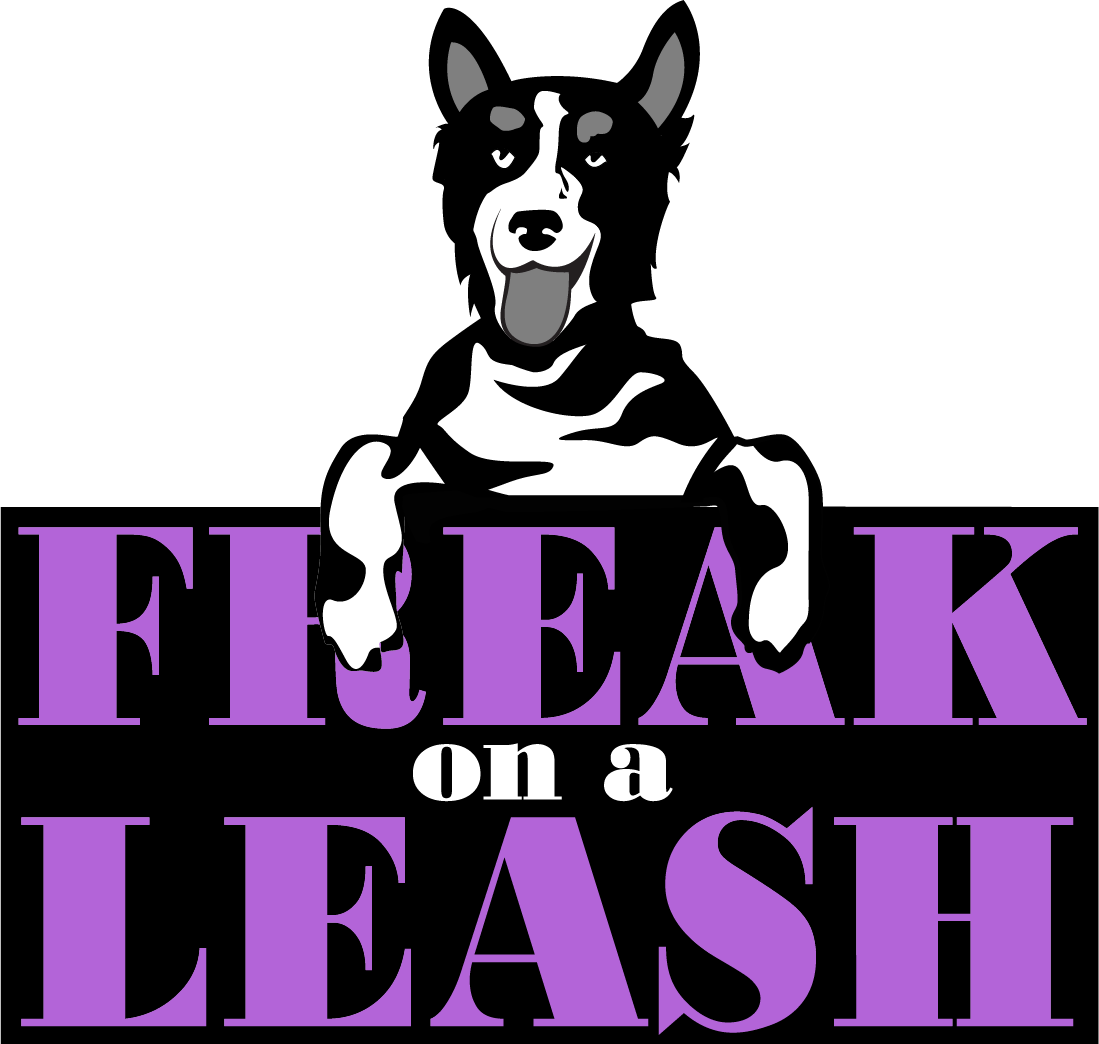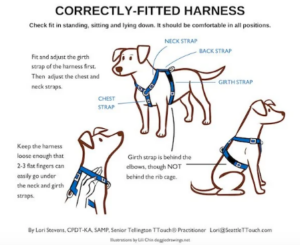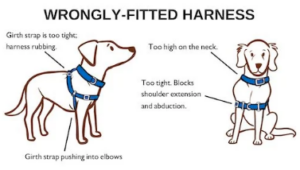Selecting an appropriate harness is important for your dog’s comfort, safety, and effective training. Can a puppy wear a harness? Yes!! Puppies can wear a well fitted harness from the beginning, it is the safest and most comfortable way to train a puppy, and causes less stress on neck and joints. But, not all harnesses are equal. Read this guide to help you make an informed choice.
Types of Dog Harnesses
- Back-Clip Harness
- Features a leash attachment on the dog’s back.
- Best for calm walkers and small breeds.
- Pros: Easy to put on; reduces pressure on the neck.
- Cons: May encourage pulling in some dogs.
- Front-Clip (No-Pull) Harness
- Leash attaches at the front of the chest.
- Best for dogs that pull during walks.
- Pros:Provides better control; discourages pulling.
- Cons: Can become tangled under the legs if not properly fitted.
- Dual-Clip Harness
- Offers both front and back leash attachment points.
- Best for versatile use; training purposes.
- Pros: Flexible; suitable for various training needs.
- Cons: Sometimes more expensive.
- Step-In Harness
- Dog steps into the harness, which is then secured on the back.
- Best for dogs uncomfortable with harnesses going over their heads.
- Pros:Easy to put on; minimal handling required.
- Cons:May be less secure if not properly fitted.
Features to Consider
- Adjustability: Ensure the harness has multiple adjustment points for best fit.
- Padding: Can prevent chafing and enhance comfort.
- Reflective Elements: Provide visibility during low-light conditions.
- Durability: Choose materials that withstand wear and tear.
- Ease of Use: Consider how easy it is to put on and take off.
Potential Risks of “No-Pull” Harnesses
While no-pull harnesses can be effective in reducing pulling behavior, some designs may restrict shoulder movement and interfere with your dog’s natural gait. This can lead to discomfort, muscle strain, and long-term joint issues. If you want a dog that pulls to walk nicely on a loose lead it is usually necessary to put time and effort into training.
“Y-shaped” harnesses are a type of design that avoid contact with the shoulder blades and therefore do not restrict shoulder movement. See how to fit a Y-shaped harness for more information.
It is essential to monitor your dog’s movement and consult your veterinarian or a professional trainer to ensure your harness does not negatively impact your dog’s health.
Recommended Harnesses
- Type:Dual-Clip Harness
- Features:Three leash attachment points (back, front, and under the chest), adjustable chest strap, padded for comfort, and reflective details for visibility.
- Pros:Versatile for various activities like hiking, tracking, and everyday walks; ergonomic design allows free shoulder movement; durable materials.
- Cons:Limited adjustability around the neck; may not be suitable for heavy pullers.
- Price:Around $65.
- Availability: Available on Non-stop Dogwear’s official website, Amazon and select retailers.
- Ruffwear Front Range Harness (or similar Ruffwear harness)
- Type:Dual-Clip Harness
- Features:Four adjustment points, padded chest and belly panels, reflective trim.
- Pros:Durable; suitable for daily use and outdoor activities.
- Cons:Some dogs may find the over-the-head design uncomfortable.
- Price:Around $50.
- Availability: Available at major retailers, on Amazon and online.
- Type:Dual-Clip Harness
- Features:Six adjustment points, no-pull design, minimalistic build.
- Pros:Highly adjustable; promotes natural movement.
- Cons:Lacks padding; may be less comfortable for extended wear.
- Price:Around $50.
- Availability: Available at select retailers, Amazon and online.
- Type:Dual-Clip Harness
- Features:Five adjustment points, safe no-pull design, minimalistic build.
- Pros:Highly adjustable; promotes natural movement.
- Cons:Lacks padding; may be less comfortable for extended wear.
- Price:Around $30.
- Availability: Available on Amazon, at select retailers and online.
- Type:Dual-Clip Harness
- Features:Front and back leash attachments, adjustable straps, reflective material.
- Pros:Affordable; easy to put on; suitable for training.
- Cons:May not withstand heavy chewing.
- Price:Around $18.
- Availability: Available on Amazon and elsewhere online.
Fitting Tips
- Measure Your Dog before Purchase. Use a soft measuring tape to measure the widest part of the chest and the lower neck.
- Check Fit. You should be able to fit two fingers between the harness and your dog’s body. Check fit standing, sitting, and lying down.
- Observe Movement. Ensure the harness doesn’t restrict movement or cause discomfort.
Conclusion
Choosing the right harness for your dog enhances their comfort and safety during walks and training sessions. Consider your dog’s specific needs, behavior, and body type when selecting a harness. Always monitor your dog for any signs of discomfort and adjust the harness as needed. Need more help reducing pulling on walks? Check out this blogpost.



